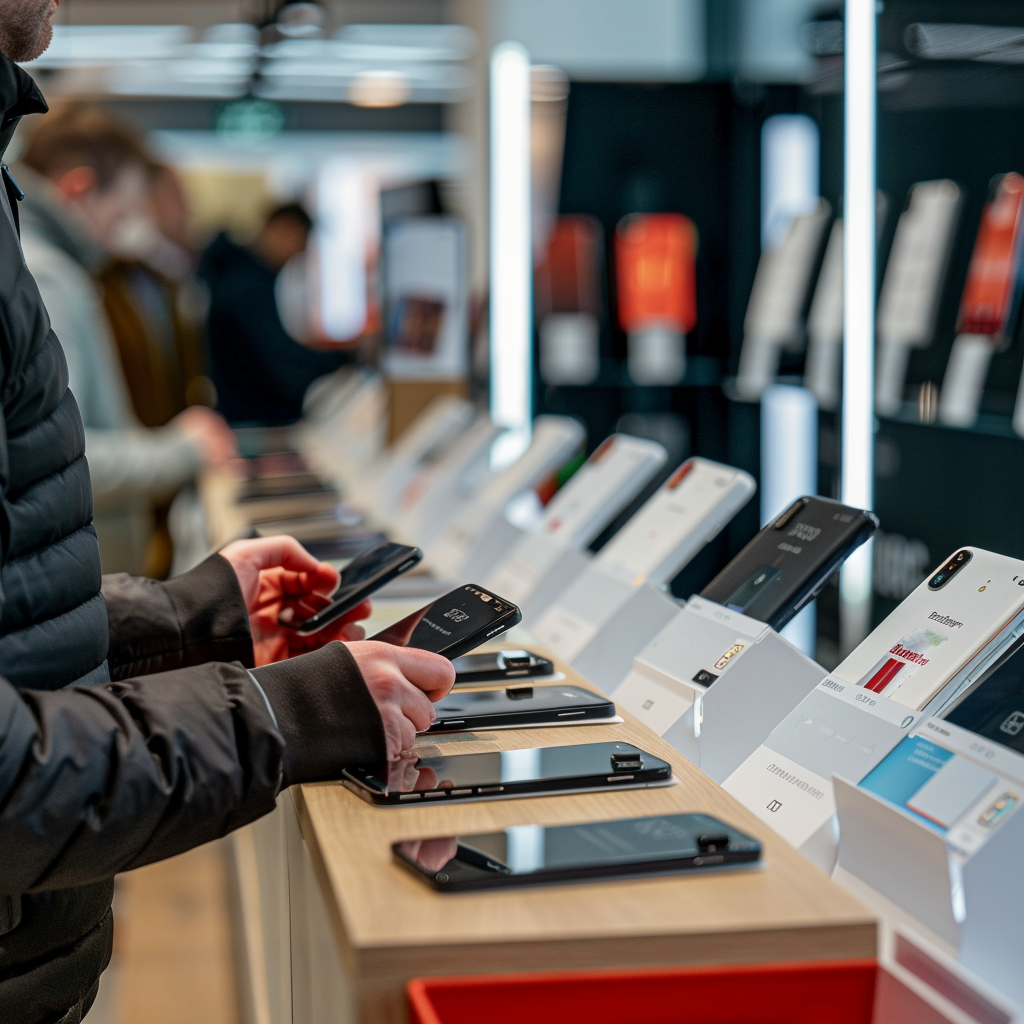1. Identify Your Priorities
Before you dive into choosing a smartphone, it’s essential to think about what matters most to you in a device. Are you primarily concerned with camera quality? Battery life? Or perhaps storage capacity? Defining your priorities will help you narrow down your choices.
Key Features to Consider:
- Camera: If you take a lot of photos, look for a phone with at least 12 MP and decent low-light performance.
- Battery Life: A battery capacity of 4,000 mAh or higher is ideal for all-day use.
- Performance: Look for phones with at least 3-4GB of RAM and a mid-range processor for smooth multitasking.
- Storage: For everyday use, at least 64GB of storage is recommended, especially if you download apps or store photos and videos.
- Display: A screen resolution of at least 720p (HD) ensures a clear and enjoyable viewing experience.
Actionable Tip: Write down your top three priorities before starting your search. This will help you stay focused and avoid being swayed by features you don’t really need.
2. Operating System: Android vs. iOS
When choosing a budget smartphone, the operating system is one of the most significant factors. Most budget phones run on Android, while iPhones are generally pricier. Android offers more customization options and a wide range of devices at different price points, whereas iOS is known for its smooth performance and long-term software updates.
Why It Matters: Android is more affordable, but iPhones hold their value longer and offer a more consistent experience across all Apple devices.
Actionable Tip: If you’re invested in the Apple ecosystem, consider looking for an older model iPhone like the iPhone SE or refurbished options. For Android users, brands like Xiaomi, Samsung, and Motorola offer affordable models with great features.
3. Check the Build Quality and Design
Just because a phone is budget-friendly doesn’t mean it should feel cheap. Many affordable smartphones now come with durable designs and even features like water resistance and fingerprint sensors. Pay attention to the materials used and how the phone feels in your hand.
Key Features:
- Materials: Look for phones with polycarbonate or aluminum bodies for durability.
- Ergonomics: Make sure the phone is comfortable to hold and use with one hand if needed.
- Extra Features: Some budget phones include features like fingerprint sensors, face unlock, or even water-resistant ratings, so it’s worth checking.
Actionable Tip: Visit a store to physically hold a few phones if possible. This will give you a better sense of how the device feels and whether it meets your design expectations.
4. Battery Life and Charging Speeds
Battery life is one of the most critical factors in choosing a smartphone. Most budget smartphones can last a full day of use, but battery size isn’t the only thing to consider. Fast charging capabilities can also make a big difference in your daily routine.
What to Look For:
- Battery Capacity: Look for phones with at least 4,000 mAh, which should last a full day with moderate use.
- Charging Speed: Many budget phones now come with fast charging options, so you won’t need to wait hours for a full charge.
Actionable Tip: Read reviews to get an idea of how long the battery lasts in real-world scenarios. The official specs can sometimes be misleading, especially for heavy users.
5. Camera Quality
While top-of-the-line cameras are often found in flagship models, many budget smartphones offer decent cameras for everyday use. For most people, a phone with a 12 MP camera or higher and good software optimization will suffice for social media photos and casual photography.
What to Consider:
- Megapixels: Look for at least 12 MP for good photo quality.
- Low-Light Performance: Budget phones often struggle in low-light conditions, so check for reviews that cover night photography.
- Video Quality: If you record videos frequently, look for phones that can shoot at least 1080p at 30 fps.
Actionable Tip: Take sample photos at the store or check online reviews with photo comparisons to ensure the camera meets your needs.
6. Consider the Brand’s Reputation and Software Support
Not all budget smartphones come with the same level of support. Some brands offer longer software updates and better customer service than others. It’s essential to choose a phone from a brand known for providing timely updates and good after-sales support.
Why It Matters: Regular software updates are critical for keeping your phone secure and ensuring it runs smoothly over time. Some budget brands may cut corners on software support.
Recommended Brands:
- Samsung: Offers several budget models with decent specs and consistent software updates.
- Motorola: Known for its affordable yet reliable smartphones with near-stock Android experiences.
- Xiaomi/Redmi: Offers excellent value for money with high specs at low prices, but software support can vary.
Actionable Tip: Check how long the manufacturer promises software updates and security patches before buying a budget phone. This can extend the phone’s lifespan by keeping it up-to-date.
7. Look for Deals and Discounts
Smartphone prices fluctuate throughout the year, so if you’re looking to get the best deal, it’s worth keeping an eye on sales and promotions. Black Friday, Cyber Monday, and back-to-school sales often feature significant discounts on budget smartphones.
Actionable Tip: Don’t rush your purchase. Compare prices from different retailers, and sign up for price alerts to get the best deal on your chosen model.
Conclusion: Get the Best Value for Your Money
Choosing the right budget smartphone doesn’t have to be difficult. By focusing on the features that matter most to you—whether it’s battery life, camera quality, or storage capacity—you can find an affordable device that fits your everyday needs. Remember to check reviews, compare brands, and look for deals to get the best value for your money.












